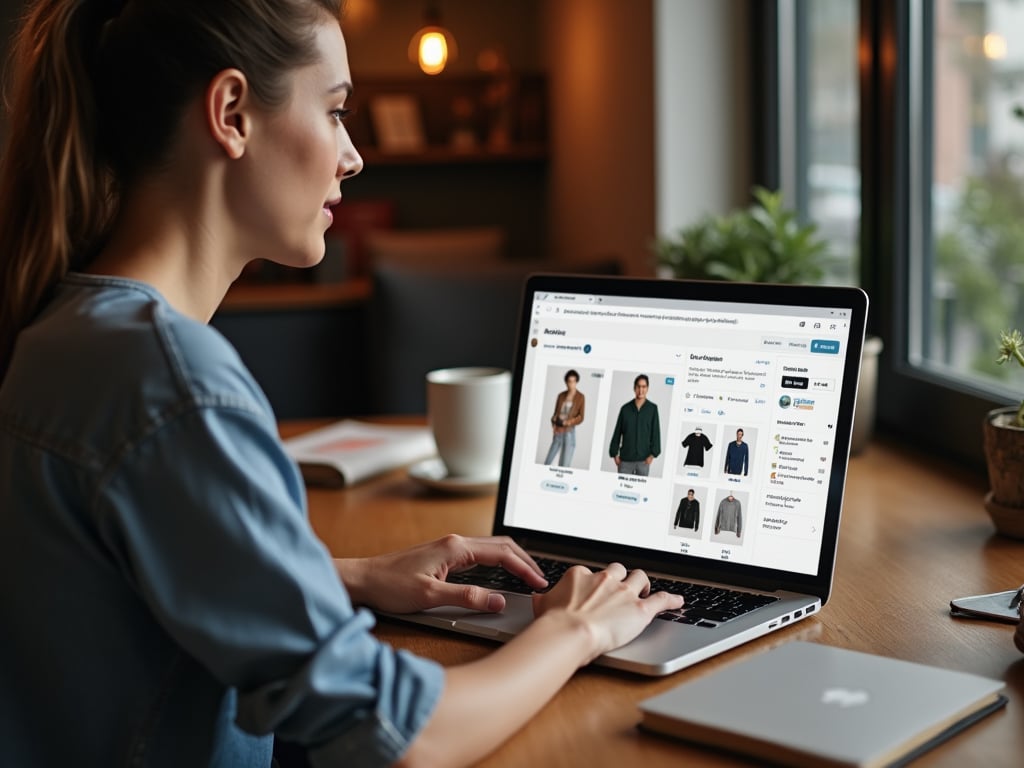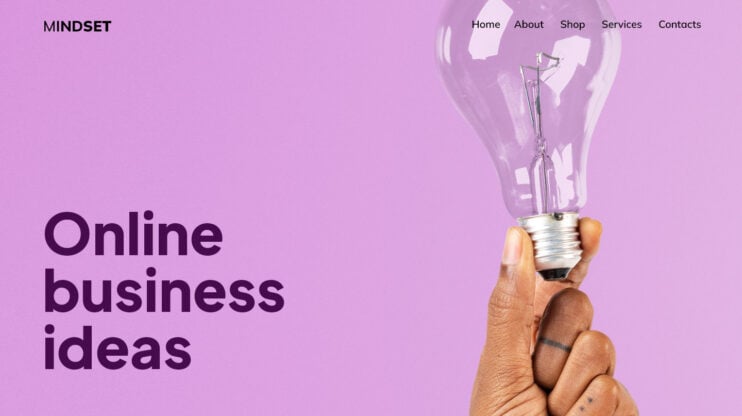Starting an online store can feel like a big task. You might wonder if you need to hire a web design agency to create your ecommerce site. The good news is you don’t always need one.
You can build a great-looking online store on your own with the right tools and some effort.
Many platforms offer easy-to-use templates and drag-and-drop editors. These simplify setting up a basic ecommerce site without coding skills.
You can customize colors, add your logo, and arrange products to match your brand.
But think about your needs before you decide. Do you have time to learn new software? Are you okay with a simpler design? Hiring pros might be worth it if you want something more unique or don’t have much free time.
They can create a custom look and handle tricky tech issues. In the end, it’s about what works best for your business and budget.
FAQ
Can I design my own website?
You can design your website using various website builders and content management systems (CMS) like WordPress, Shopify, Wix, or Squarespace. These platforms offer user-friendly interfaces and templates to help you create a professional-looking site without extensive coding knowledge.
Is hiring a web design agency worth it?
Hiring a web design agency can be worth it if you lack the time, expertise, or resources to create a high-quality site yourself. Agencies often provide specialized knowledge, custom designs, and ongoing support, which can lead to a more polished and effective website.
Are web designers still needed?
Yes, web designers are still needed, especially for businesses that require custom solutions, branding, and user experience design. While DIY tools are popular, many organizations prefer professional expertise for more complex projects.
What skills do I need for web design?
Essential skills for web design include proficiency in design software (like Adobe XD or Figma), knowledge of HTML/CSS, understanding user experience (UX) principles, and familiarity with responsive design and SEO practices.
How to find website designers near me?
You can find website designers near you through online directories, local business listings, social media platforms, or by asking for referrals from friends and colleagues. Websites like Upwork and Fiverr also allow you to search for freelancers by location.
Can I succeed as a self-taught web designer?
Yes, many successful web designers are self-taught. With dedication, practice, and the use of online resources such as tutorials, courses, and forums, you can develop the skills necessary to create effective websites.
How to create a website for free?
You can create a website for free using platforms like Wix, WordPress.com, or Weebly, which offer free plans with basic features and templates. Just sign up, choose a template, and customize it to fit your needs.
Are there free tools for building websites?
Several free tools exist for building websites, including website builders like Wix, Weebly, and 10Web.com. Additionally, you can use free design tools like Canva for graphics and Unsplash for free stock images.
Can I use Squarespace for ecommerce?
Yes, Squarespace is a great option for ecommerce. It offers built-in ecommerce features, customizable templates, and tools for managing products, payments, and shipping, making setting up an online store easy.
What is the cheapest way to build a website?
The cheapest way to build a website is to use free website builders like WordPress.com or Wix. However, keep in mind that free plans often come with limitations, such as ads or limited storage. Opting for a low-cost hosting plan with WordPress.org can also be affordable.

Create your online store in minutes!
Looking to sell online? Develop and launch your store with 10Web AI Ecommerce Website Builder.
Understanding ecommerce web design
Ecommerce web design is about creating online stores that look good and work well. It’s more than just making a pretty website. You need to think about how people will use it to buy things.
A good ecommerce design makes shopping easy. At a minimum, it should have:
- Clear product photos
- Easy-to-use menus
- A search bar
- Simple checkout process
The design should match what you’re selling. For example, a jewelry store might look fancy, while a tool shop could be more basic.
Your site needs to work on phones, too. More and more people shop on their phones now. Make sure buttons are big enough to tap, and text is easy to read on small screens.
Speed is key for ecommerce sites. If pages load slowly, shoppers might leave. Use small image files and clean code to keep things fast.
Safety is a big deal when money is involved. Your design should make people feel secure about buying from you. Use trust symbols and clear privacy policies.
Good ecommerce design can help you sell more. It makes shopping fun and easy for your customers. With some work, you can create a site that looks great and works well.

Do you really need an ecommerce web design agency?
You can build a great online store without hiring an agency. Many small business owners create successful ecommerce sites on their own using popular platforms.
How ecommerce platforms work
Ecommerce platforms give you the tools to make an online store. Typically, you pick a design template and add your products. These platforms handle payments, shipping, and inventory.
Popular options include Shopify, WooCommerce, and Squarespace. They offer drag-and-drop editors to customize your site. You can change colors, fonts, and layouts easily.
Most platforms have apps to add extra features. You can include customer reviews, social media feeds, and email sign-ups. They also take care of security and updates.
The benefits of doing things your way
Doing it yourself saves money. Agency fees can be very high. By using a platform, you only pay for what you need.
You have more control over your site. You can make changes anytime without waiting for an agency. This lets you test new ideas quickly.
Learning to build your own site gives you useful skills. You’ll understand how your store works. This helps you make smart choices as your business grows.
Many platforms offer support if you get stuck. They have guides, videos, and chat help. Some even have experts you can hire for specific tasks.
When to consider a web design agency
Web design agencies can be helpful in certain situations. They bring skills and tools that can take your online store to the next level. Let’s look at when you might want to work with one.
Complex customizations
Custom designs can make your store stand out. But they’re hard to do on your own. A web design agency has experts who can create unique layouts and features. They know how to code complex elements that match your brand.
Agencies can build custom product pages, checkout flows, and category structures. They can add special effects like animations or interactive elements. These extras can grab customers’ attention and boost sales.
Professional services can help optimize website performance, particularly on larger, resource-hungry ecommerce sites. Fast page loading speeds can significantly affect the overall user experience.
An agency is a good choice if you need a site that looks and works differently from others. They can turn your ideas into reality, even if they’re complicated.
Integrating advanced features
Adding complex features to your store can be tricky. Web design agencies know how to put in things like:
- Real-time inventory tracking
- Customer loyalty programs
- Personalized product recommendations
- Advanced search functions
These features can make shopping easier and more fun for your customers. They can also help you manage your store better.
Agencies have experience connecting different systems. They can make sure your new features work well with your existing setup. This saves you time and prevents problems down the road.
Scaling your business
As your business grows, your website needs to keep up. A web design agency can help your site handle more traffic and sales. They can:
- Speed up your site
- Make it work well on all devices
- Set up systems to manage more products
- Create better ways to handle orders
An agency can plan for future growth. They build sites that can expand as your business does. This means you won’t have to start over when you get bigger.
They can also help you move to more powerful ecommerce platforms if needed. This can give you new tools to manage a larger business.
Ongoing support
Running an online store means always updating and fixing things. A web design agency can offer long-term help. They can:
- Keep your site secure
- Fix bugs quickly
- Update your design as trends change
- Add new features as you need them
- Provide training on using the site
With ongoing support, you don’t have to worry about technical issues. You can focus on running your business instead of your website.
Agencies often offer maintenance plans. These can include regular check-ups and updates. This keeps your site running smoothly and looking fresh.
Comparing the costs
Doing your own ecommerce web design can save money upfront. You avoid agency fees and have full control over the process. But it takes a lot of time and skill to create a good website yourself.
Hiring an agency costs more at first. Their services aren’t cheap. But they have experts who can build a great site quickly. This saves you time to focus on other parts of your business.
Here’s a quick comparison:
DIY
- Low initial cost
- Takes more of your time
- Quality depends on your skills
- You learn as you go
Agency
- Higher upfront cost
- Saves you time
- Professional quality
- Access to experts
The choice comes down to your budget, skills, and goals. DIY could work well if you have a keen eye for web design and time to spare. But if you want a top-notch site fast, an agency might be worth the cost.
Think about the long-term, too. A better site could mean more sales down the road. This might offset the cost of hiring pros. On the flip side, learning to build your own site is a skill you can use again.

Key elements of effective ecommerce design
A good ecommerce website needs certain features to work well. Here are some key parts to include:
Simple navigation: Make it easy for shoppers to find what they want. Use clear menus and search tools.
Mobile-friendly: Your site should look good on phones and tablets. Many people shop on mobile devices now.
Fast loading: People don’t like to wait. Make sure your pages load quickly.
High-quality images: Show your products clearly. Use big, sharp photos so customers can see details.
Clear product info: Give shoppers all the facts they need. List sizes, colors, materials, and prices.
Easy checkout: Keep the buying process simple. Don’t ask for too much information or take too many steps.
Customer reviews: Let buyers see what others think. This builds trust in your products.
Security features: Protect customer data. Use encryption and secure payment methods.
Contact info: Make it easy for shoppers to reach you. Include phone numbers and email addresses.
Social sharing: Add buttons so people can share your products on social media.
By including these elements, you can create an ecommerce site that’s easy to use and helps boost sales.
User experience and user interface principles
Good UX and UI design are key for any online store. They help make your site easy to use and nice to look at.
UX focuses on how people interact with your site. It’s about making things simple and clear. A good UX means customers can find what they want fast.
UI is about how your site looks. This includes colors, fonts, and layouts. A good UI is pleasing to the eye and matches your brand.
Here are some key UX/UI tips:
- Keep it simple
- Make navigation easy
- Use clear labels
- Have a clean layout
- Make buttons stand out
- Use white space wisely
Think about how people use phones and tablets, too. Your site should work well on all devices.
Test your design with real users. See how they browse and shop. Fix any parts they find hard to use.
Good UX/UI can boost sales and keep customers coming back. It’s worth taking the time to get it right.
The role of SEO in ecommerce
SEO helps online stores show up in search results. This means more people can find your products when they look online. It’s a key way to get customers without paying for ads.
Here’s why SEO matters for online shops:
- More visitors to your site
- Higher rankings in search results
- Better chance of making sales
SEO tips for your online store:
- Use keywords in product names
- Add keyword-rich descriptions
- Make sure your site loads fast
- Create helpful content about your products
SEO takes time, but it’s worth it. As you improve your site, you’ll see more people coming to shop. This can help your business grow over time.
You can do some SEO yourself. Start by looking at how people search for products like yours. Then, use those words on your site. Also, make sure your site works well on phones.
SEO isn’t just about words. Pictures matter, too. Name your product images clearly. This helps search engines understand what you’re selling.
Remember, SEO is ongoing work. Keep updating your site and adding new content. This shows search engines that your store is active and helpful to shoppers. It can pay off to watch others in your industry or market, keeping up with new types of helpful content, tools, or features for your audience.
Leveraging social proof and trust signals
Building trust with customers is key for online stores. You can use social proof to show that other people like and trust your business. This helps new shoppers feel more confident about buying from you.
Here are some ways to add social proof to your site:
- Customer reviews
- Ratings and star scores
- Testimonials from happy clients
- Case studies of successful projects
- Awards or certifications you’ve earned
- Logos of well-known customers
- Number of products sold or customers served
Trust signals also help shoppers feel safe on your site. Some good trust signals are:
- Security badges
- SSL certificates
- Clear return/refund policies
- Contact information
- About Us page with team bios
Adding these elements to your store can boost sales. They show shoppers that others have had good experiences with you. This makes people more likely to buy.
You don’t need an agency to add social proof. Many ecommerce platforms have built-in tools for reviews and ratings.
You can also create testimonials and case studies yourself. Just ask happy customers if you can share their feedback.
The key is to be honest. Only use real reviews and accurate info. Fake social proof will backfire if customers find out.
Focus on sharing true stories of how you’ve helped people. This builds real trust over time.

Create your online store in minutes!
Looking to sell online? Develop and launch your store with 10Web AI Ecommerce Website Builder.
Do-it-yourself ecommerce web design
You can create an online store on your own with the right tools and skills. Many platforms make it easy to build an ecommerce site without coding experience.
Choosing the right platform
When picking a platform, look at ease of use, features, and cost. Wix and Shopify are popular choices for beginners. They offer drag-and-drop editors and pre-made templates. This lets you make a store quickly.
Some platforms have free plans to start. As your business grows, you can upgrade to paid plans with more features. Think about what you need now and in the future.
Look for platforms with good customer support. This helps if you get stuck. Also, check if the platform works with tools you already use, like payment systems or shipping software.
Design tools and resources
Many free design tools can help make your site look good. Canva is great for creating logos and product images. Meanwhile, GIMP is a free alternative to Photoshop for photo editing.
For color schemes, try Coolors or Adobe Color. These help you pick colors that work well together. Meanwhile, Font Pair can help you choose fonts that match.
Look for free stock photos on sites like Unsplash or Pexels. These can add a professional touch to your site. Just be sure to check the license before using any images.
Learning essential design skills
Start by studying other ecommerce sites you like. Notice how they use color, images, and text. This can give you ideas for your own site.
Learn basic design rules like using white space and keeping things simple. Too much clutter can make customers leave your site.
Practice taking good product photos. Clear, well-lit images are key for online sales. You can find tutorials on YouTube to improve your photography skills.
Learn about user experience (UX) design. This focuses on making your site easy to use. Simple things like clear menus and an easy checkout process can boost sales.
Building an online presence with 10web
10Web offers an easy way to create your ecommerce website. You don’t need to hire an agency or have technical skills. The platform has tools to help you quickly design a professional online store, even without coding or design expertise.
10Web works with WooCommerce, a popular WordPress plugin and ecommerce platform. This gives you access to essential ecommerce tools like:
- 1000s of extensions, plugins, and themes
- Tax automation
- Shipping options
- Simple payment gateway integration (including PayPal)
- Store and product management
What is 10Web?
- AI-powered website creation: 10Web’s AI Website Builder uses advanced algorithms to build a professional ecommerce site section-by-section based on your specific needs. You’ll get a customized website outline and structure based on your business input, ensuring the site reflects your brand from the start.
- WooCommerce integration: Built on WooCommerce, 10Web offers a full-featured backend with all the functionalities needed to support your online store, from product catalog management to customizable checkout flows.
- AI-generated design: 10Web’s AI handles initial site styling, such as selecting colors and fonts, which you can further adjust using the platform’s visual editor to perfectly match your brand identity.
- Comprehensive store management tools: From a single dashboard, you can handle everything from order tracking to customer management, shipping, taxes, and analytics on sales performance.
- Marketing and payment options: Built-in email marketing tools, campaign creation, ad tools, and multi-channel integration options help with customer acquisition. 10Web supports multiple payment gateways, including Stripe, PayPal, and Apple Pay, making checkout smooth for customers.
- Performance optimization: With Google Cloud hosting, the 10Web PageSpeed Booster ensures your ecommerce site loads quickly, which is critical for customer experience and conversion rates.
Pro web design with the AI Ecommerce Website Builder
When you design an ecommerce site with the AI Ecommerce Website Builder, you have full control over the content and appearance of the new site.
Start from scratch and describe your perfect custom site to the AI Website Builder. Alternatively, choose from pre-made templates or let the AI recreate your favorite website’s layout, styles, and design.
- Sign up for free: Start by creating an account on 10Web and opt for the free plan to explore the features.
- Provide business details: Describe your ecommerce business, including industry type, target audience, and product focus. The AI uses this information to generate an outline tailored to your brand.
- Generate an outline: The AI will provide a website structure, covering essential ecommerce sections for pages like the Homepage, Product Pages, and Checkout.
- Customize the design: Use the drag-and-drop editor to modify colors, fonts, and layouts. You can further adjust each section as needed to fit your brand’s unique style.
- Add products and set up store: Manage product listings, configure payment methods, and define tax and shipping options—all from the 10Web dashboard.
- Optimize and launch: Utilize 10Web’s PageSpeed Booster for site speed and configure any remaining site settings, such as SSL security and SEO. Once ready, publish your site!
By using 10Web, you can achieve a professional ecommerce site with minimal upfront costs and no need for web design agency involvement, giving you both control and flexibility over your online store.

Create your online store in minutes!
Looking to sell online? Develop and launch your store with 10Web AI Ecommerce Website Builder.
The importance of web analytics
Web analytics tools help you track how people use your website. They show you things like:
- How many people visit your site
- Which pages do they look at
- How long they stay
- Where they come from (search engines, social media, etc.)
This info is very useful. It lets you see what’s working well and what needs to get better on your site.
With web analytics, you can:
- Find out which products are popular
- See which pages make people leave your site
- Learn how customers move through your online store
You can use this data to make smart choices. For example, you might change your site layout or add new features based on what you learn.
It’s good to check your analytics often. Look for trends and patterns.
When you make changes to your site, use analytics to see if they help or not.
Some popular web analytics tools are:
- Google Analytics (free)
- Adobe Analytics
- Mixpanel
Pick a tool that fits your needs and budget. Then, use it to keep improving your online store bit by bit.
Optimizing for conversion
Boosting your online store’s conversion rate takes smart planning and testing. Focusing on key areas allows you to turn more visitors into buyers without hiring an agency.
Call to action (CTA) strategies
Your CTAs guide shoppers to take the next step. Make buttons stand out with bright colors and clear text. Use action words like Buy Now, Add to Cart, or Shop Sale. Place CTAs where they’re easy to see and click.
Test different button styles, colors, and text to find what works best. Add a sense of urgency with phrases like Limited Time Offer or Only 3 Left. This can push shoppers to act faster.
For mobile users, make buttons big enough to tap easily. Put important CTAs near the top of the page so people don’t have to scroll. Try adding CTAs in pop-ups or slide-ins to catch attention without being too pushy.
Landing page optimization
A good landing page quickly shows visitors what you offer and why they should buy. Keep your design clean and simple. Put your main message and product benefits front and center.
Use high-quality photos or videos to show your products in action. Break up text into short paragraphs or bullet points. This makes it easier to read, especially on mobile devices.
Include trust signals like customer reviews, security badges, and money-back guarantees. These help new visitors feel safe buying from you.
Make sure your page loads fast. Slow pages can drive people away before they even see your offer.
Test different layouts, headlines, and images to find what gets the most sales or sign-ups.
Checkout process streamlining
A smooth checkout process can stop shoppers from abandoning their carts. Keep it short and simple. Ask only for the info you really need.
Show a progress bar so people know how many steps are left. Let guests check out without making an account.
Offer various payment options like credit cards, PayPal, and Apple Pay. Make sure your checkout pages look trustworthy with security icons and clear policies.
Auto-fill info when possible to save time. Show order summaries and shipping costs upfront to avoid surprises.
For mobile users, make forms easy to fill out on small screens. Use large text fields and dropdown menus. Give a way to save carts so people can finish shopping later if needed.
Conclusion
Choosing the right path for your ecommerce website design is a crucial decision that can influence your store’s growth and customer satisfaction.
Ultimately, whether you work with a professional ecommerce web design agency or take on the design yourself depends on your business needs, budget, and long-term goals. By carefully considering these factors, you can create an online store that looks great and delivers a seamless shopping experience to keep your customers coming back.

Create your online store in minutes!
Looking to sell online? Develop and launch your store with 10Web AI Ecommerce Website Builder.












